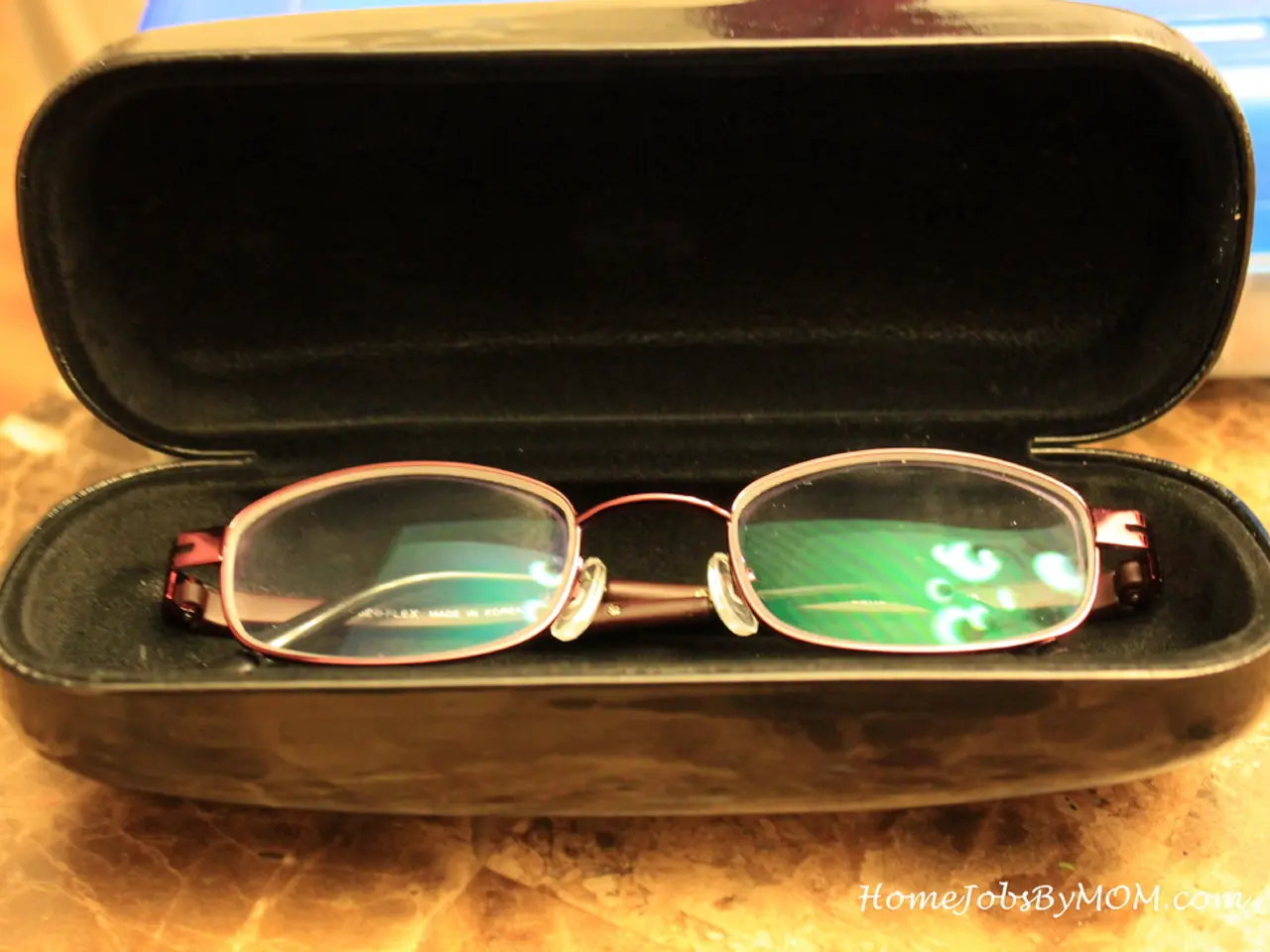Apple's ambition for augmented reality glasses remains unabandoned
In the realm of tech giants, Apple continues to push boundaries, striving to make its versions of emerging trends the best in the market [1]. However, the journey towards standalone augmented reality (AR) glasses has faced some challenges.
As of mid-2025, Apple has halted development on its standalone AR smart glasses that would connect to a Mac for power [2]. The project, which initially aimed to tether to a Mac, was shelved in January 2025 due to technical challenges such as insufficient power from the iPhone and doubts about the feasibility of Mac-connected glasses [1][2]. Apple’s CEO Tim Cook remains highly committed to AR glasses, considering them a top priority, but the product is expected only in a future form, possibly in 2028 or later [1][2].
In contrast, Apple has released the Vision Pro mixed-reality headset in early 2024 [3][5]. This advanced but bulky and expensive spatial computing device blends AR and VR, with limited sales so far and plans to iterate with a lighter, cheaper model around 2027 [3][5]. The Vision Pro is not a glasses form factor but a headset requiring external power sources, and recently Apple scaled back production, believing it has enough units to meet demand for now [1][5].
Meanwhile, Meta has made significant strides in the AR smart glasses market. Meta launched AR smart glasses in partnership with Ray-Ban earlier, targeting consumer-friendly form factors and real-world use [1][2]. These glasses have seen active sales and represent Meta’s current frontline consumer AR hardware [1][2]. Apple lags behind Meta in having a mass-market AR glasses product available, focusing instead on future innovation [1][2].
Here's a comparison of the products:
| Aspect | Apple AR Glasses | Apple Vision Pro Headset | Meta AR Smart Glasses | |--------------------------------|---------------------------------|---------------------------------|---------------------------------| | Product Status | Development paused January 2025; potential launch ~2028 | Released February 2024; limited sales; second gen expected ~2027 | Currently selling AR glasses in consumer market | | Form Factor | True glasses form factor planned | Headset, bulky, requires external power | Glasses resembling regular eyewear | | Sales | No commercial availability yet | Limited sales; expensive ($3,499) | Established consumer sales | | Technical Challenges | Power, battery, display tech; Mac connection abandoned | Heavy, costly, niche use cases | More mature, portable tech | | CEO Focus | Tim Cook prioritizes, “hell bent” on AR glasses | Continued investment in Vision Pro | Active consumer market deployment |
In brief, Apple’s standalone AR glasses are still in development limbo with a multi-year horizon, while Meta’s AR smart glasses have already achieved consumer sales [1][2][3][5]. Apple’s Vision Pro remains a high-end mixed reality headset rather than lightweight AR glasses [1][2][3][5].
Apple is reportedly going to stop producing the current version of the VR goggles (Vision Pro) [6]. The release date of the more affordable Vision Pro VR goggles is still unknown [6]. Meta, on the other hand, reportedly has plans to add a display to the Ray-Ban Meta smart glasses in the near future [7]. Meta CEO Mark Zuckerberg reportedly sold more than a million units of the Ray-Ban Meta smart glasses [8].
References: 1. Apple's AR glasses are still in development limbo 2. Apple's AR glasses: What we know so far 3. Apple Vision Pro review 4. Apple Vision Pro: Release date, price, and features 5. Apple Vision Pro: Everything you need to know 6. Apple to stop producing Vision Pro VR goggles 7. Meta to add display to Ray-Ban Meta smart glasses 8. Meta CEO Mark Zuckerberg sells over a million Ray-Ban Meta smart glasses
- Despite Apple's ongoing efforts to make their AR technology the best in the market, the development of their standalone AR glasses, initially planned to connect to a Mac, was paused in January 2025 due to technical challenges.
- In comparison, Meta has successfully launched AR smart glasses in partnership with Ray-Ban, aiming for consumer-friendly form factors and real-world use, with active sales as of mid-2025.
- The Vision Pro mixed-reality headset, released by Apple in early 2024, is a bulky and expensive spatial computing device that blends AR and VR, but it does not employ the glasses form factor.
- Tim Cook, Apple's CEO, remains highly committed to AR glasses, considering them a top priority, but the product is expected only in a future form, with potential launch around 2028 or later.
- Meta CEO Mark Zuckerberg reportedly sold over a million units of the Ray-Ban Meta smart glasses, indicating strong consumer interest in this emerging technology and Meta's lead in the market.




